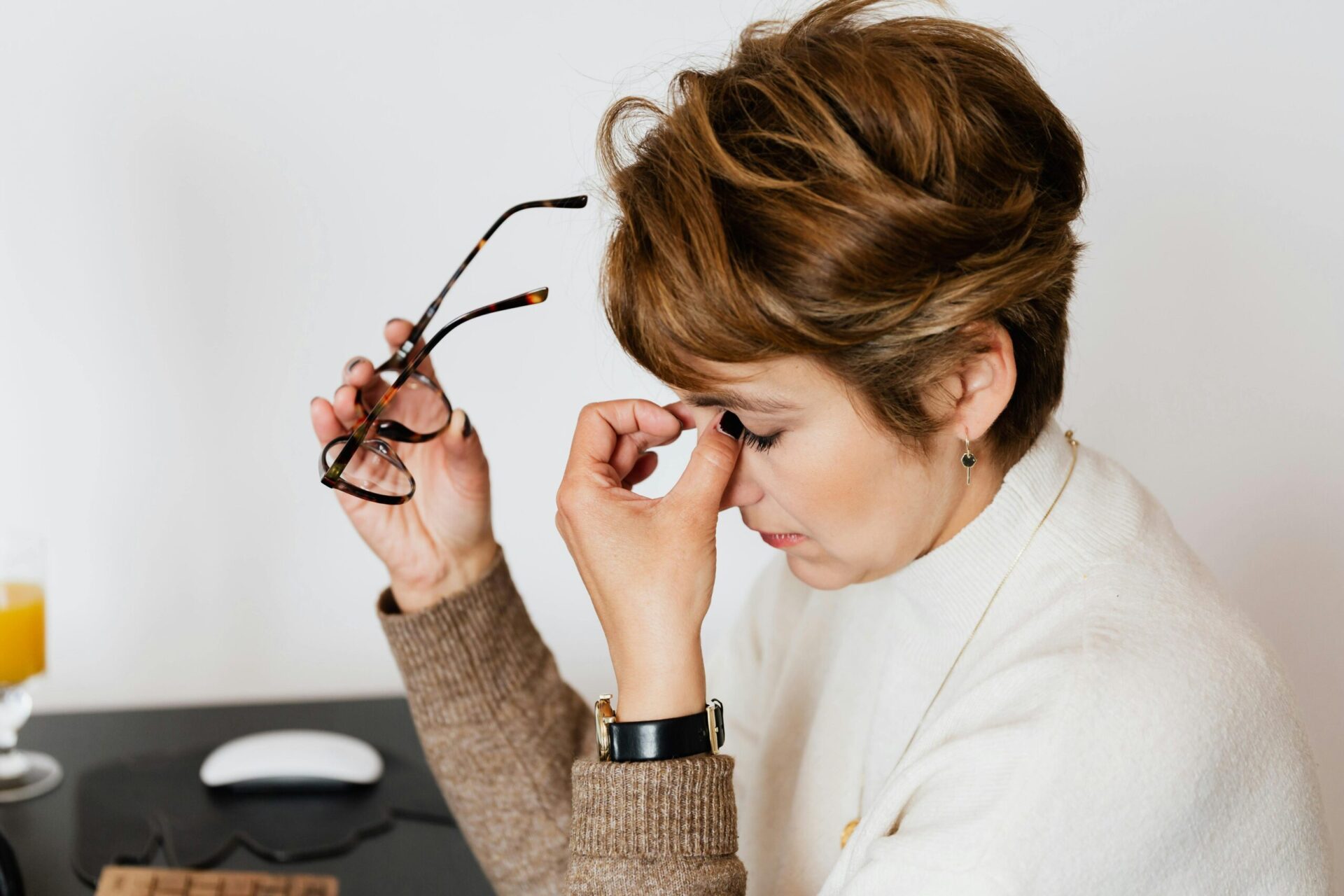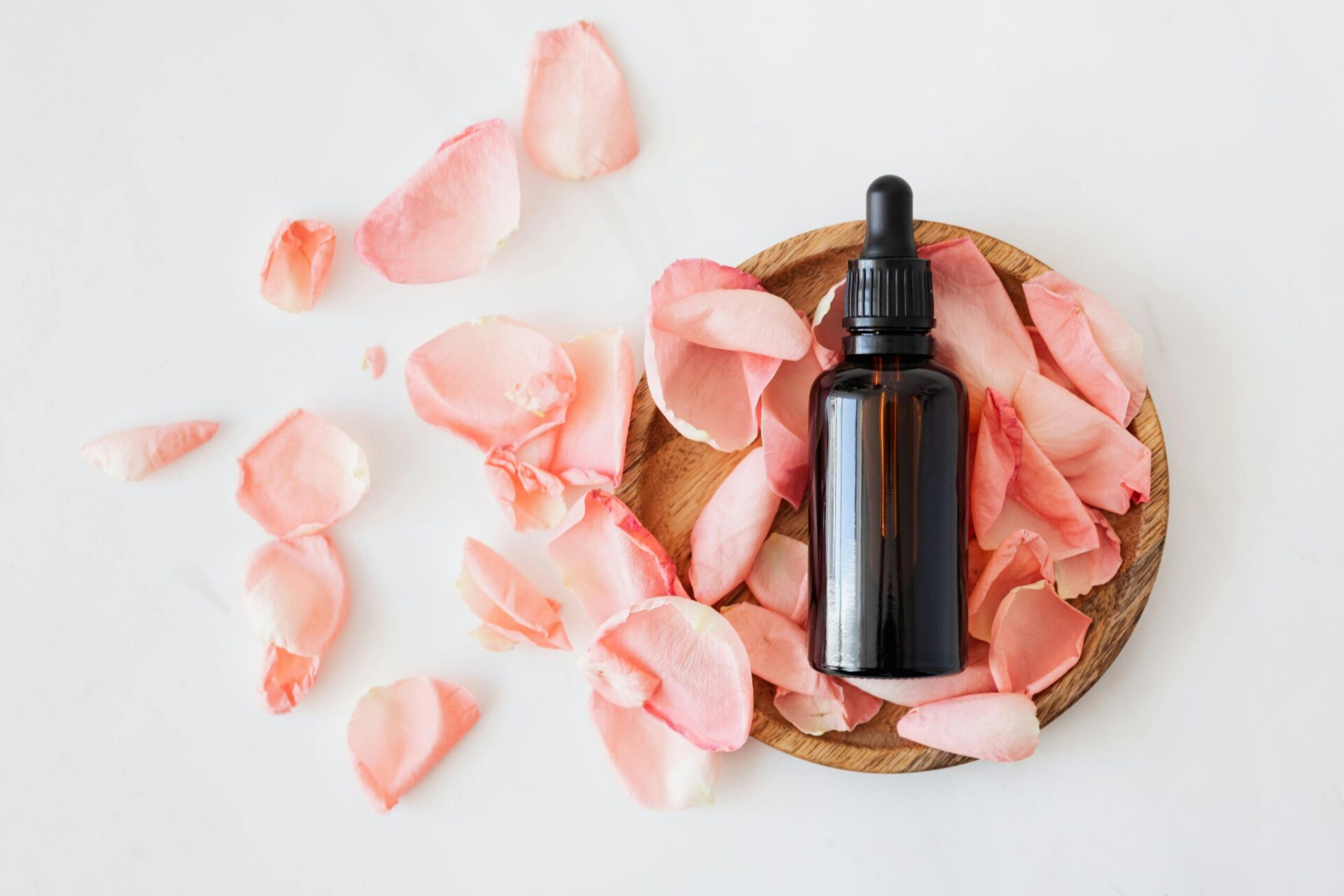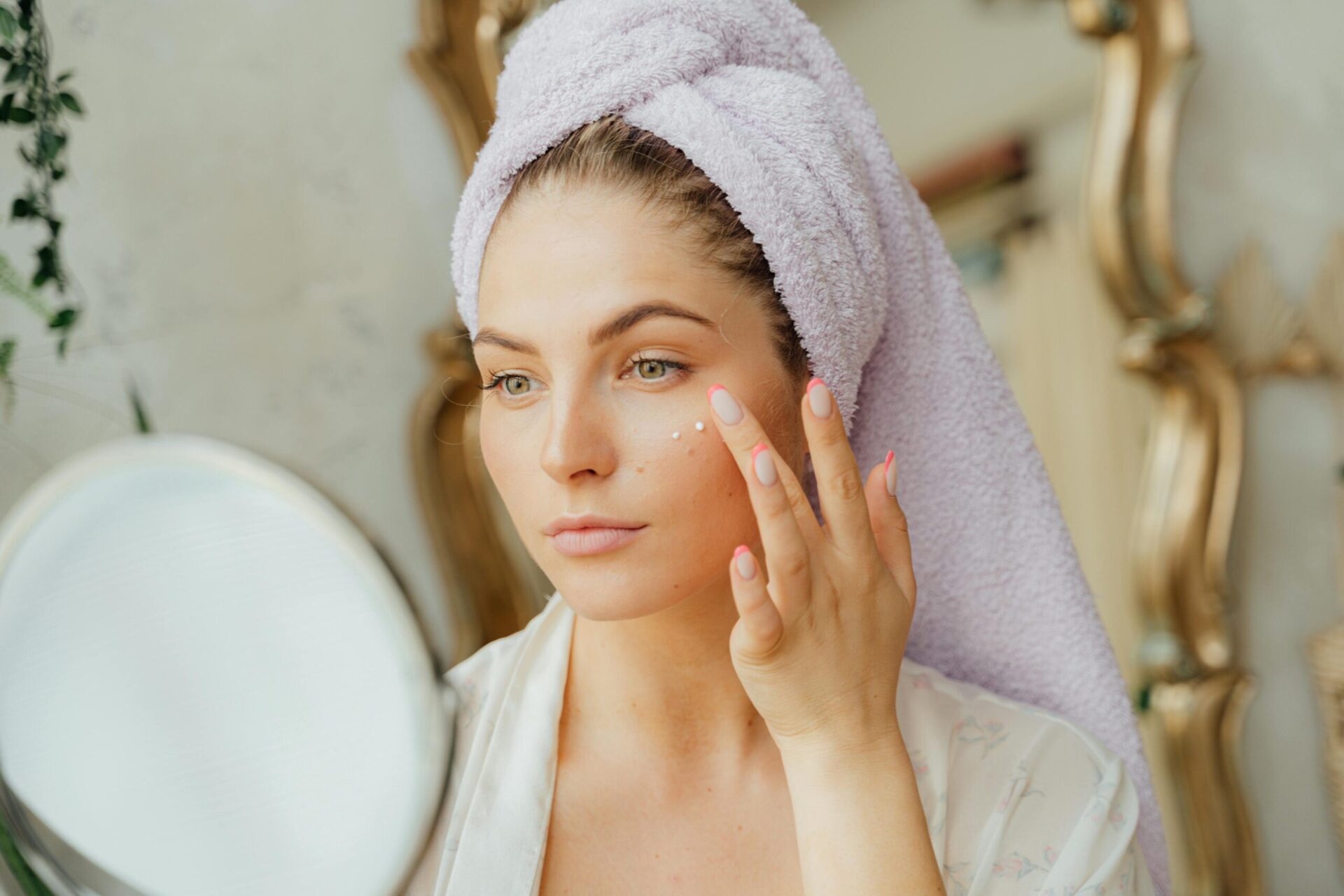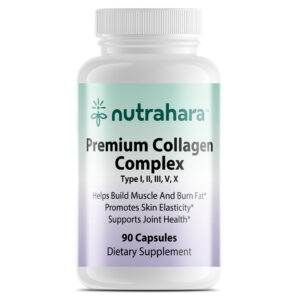
1. Introduction
Feeling constantly drained or struggling to get through the day without multiple cups of coffee? Many women experience persistent fatigue due to a combination of lifestyle factors, hormonal changes, and nutrient deficiencies. While quick fixes like caffeine and sugar may provide temporary relief, they often lead to energy crashes that leave you feeling worse. Instead of relying on artificial stimulants, embracing natural remedies for boosting energy levels can provide long-lasting vitality without side effects.
Women in different life stages—whether menstruating, pregnant, lactating, pre-menopausal, or post-menopausal—face unique challenges that can impact energy levels. Fluctuating hormones, poor sleep, stress, and nutrient depletion all play a role in chronic fatigue. Yet, mainstream advice often overlooks holistic approaches that address the root causes of low energy.
By incorporating nutrient-dense foods, movement, breathwork, adaptogenic herbs, and aromatherapy into daily routines, women can harness their body’s natural ability to sustain energy. Natural remedies for boosting energy levels work in harmony with the body’s biological rhythms, enhancing both mental clarity and physical endurance.
This article explores seldom-discussed yet effective methods—such as lymphatic drainage for energy restoration, the role of gut bacteria in vitality, and how circadian fasting can optimize mitochondrial function. By implementing these science-backed strategies, women can shift from feeling perpetually fatigued to enjoying consistent, vibrant energy throughout the day.
2. Understanding Energy Levels in Women
Energy levels fluctuate based on a variety of internal and external factors, many of which are unique to women. Unlike men, whose hormonal cycles remain relatively stable, women experience monthly, yearly, and life-stage-based shifts that impact metabolism, mood, and stamina. Identifying the root causes of fatigue is essential for finding effective natural remedies for boosting energy levels.
2.1. Common Causes of Low Energy in Women
Many women struggle with fatigue due to underlying imbalances that often go undiagnosed. Key contributors include:
- Hormonal Fluctuations
- Menstrual cycle: A drop in estrogen and progesterone before menstruation can trigger sluggishness.
- Pregnancy & lactation: The body prioritizes nutrients for the baby, often leaving mothers depleted.
- Menopause: Declining estrogen impacts sleep quality, metabolism, and mood stability.
- Nutritional Deficiencies
- Iron deficiency (anemia) – Common in menstruating women, leading to low oxygen circulation.
- Vitamin B12 & folate deficiency – Affects nerve function and red blood cell production.
- Magnesium depletion – Impacts muscle recovery, sleep, and stress management.
- Sleep Disruptions & Stress Overload
- High cortisol levels from chronic stress lead to adrenal fatigue.
- Poor sleep quality prevents deep restorative cycles, reducing energy efficiency.
2.2. How Lifestyle Impacts Energy Levels
Daily habits play a crucial role in sustaining energy. Small, consistent changes can have a profound effect:
- Hydration & Electrolytes
- Dehydration reduces blood flow and oxygen delivery, leading to sluggishness.
- Adding sea salt or coconut water to water helps replenish lost minerals.
- Gut Health & Digestion
- The gut microbiome plays a direct role in energy metabolism.
- Poor digestion can limit nutrient absorption, causing chronic fatigue.
- Movement & Oxygenation
- Sedentary lifestyles reduce circulation, making muscles feel heavy and sluggish.
- Deep breathing (pranayama) and stretching improve oxygen flow and reduce stress.
Understanding these foundational aspects of energy regulation allows women to implement natural remedies for boosting energy levels effectively. The next sections explore how diet, exercise, meditation, and supplements can restore sustainable vitality.
3. Natural Remedies for Boosting Energy Levels
Fatigue is often a sign that the body needs nutritional support, movement, and mindfulness practices to restore balance. Unlike stimulants that provide a temporary rush, natural remedies for boosting energy levels work with the body’s biological systems to sustain vitality.
According to the Cleveland Clinic, the foods and drinks consumed throughout the day play a crucial role in energy production. Choosing the right nutrients at the right time can make a significant difference in overall stamina.
3.1. Energizing Foods for Women
What women eat directly affects metabolism, hormone balance, and energy regulation. Key foods to incorporate include:
- Complex Carbohydrates for Steady Energy
- Whole grains like quinoa, oats, and brown rice provide slow-releasing fuel.
- Sweet potatoes and legumes support blood sugar stability.
- Protein-Rich Foods for Muscle & Metabolism Support
- Lean sources such as eggs, salmon, and Greek yogurt help sustain energy.
- Plant-based proteins like lentils, chickpeas, and nuts offer essential amino acids.
- Healthy Fats for Hormonal Balance
- Avocados, olive oil, and flaxseeds support cognitive function and energy metabolism.
- Omega-3-rich foods like walnuts and chia seeds reduce inflammation that can cause fatigue.
3.2. The Role of Hydration in Energy Levels
Dehydration can lead to sluggishness, dizziness, and brain fog. Proper hydration strategies include:
- Drinking at least half of body weight in ounces of water daily.
- Adding electrolytes like potassium, sodium, and magnesium to prevent dehydration.
- Drinking herbal teas like ginseng, ginger, and green tea for a natural energy lift.
3.3. The Power of Adaptogenic Herbs
Adaptogens help the body resist stress, regulate hormones, and boost stamina. Some of the most effective include:
- Ashwagandha – Lowers cortisol levels and reduces stress-induced fatigue.
- Rhodiola Rosea – Enhances endurance and mental clarity.
- Ginseng – Provides a natural, stimulant-free energy boost.
- Maca Root – Supports hormone balance and increases vitality.
These natural remedies for boosting energy levels work synergistically to improve energy production at the cellular level. The next section will explore how movement, yoga, and breathwork further enhance energy flow.
4. Movement and Exercise for Sustainable Energy
Physical activity is one of the most effective natural remedies for boosting energy levels. Exercise stimulates circulation, increases oxygen intake, and triggers the release of endorphins—hormones that enhance mood and reduce fatigue. While intense workouts can sometimes lead to exhaustion, the right balance of movement can significantly improve stamina and overall vitality.
4.1. How Physical Activity Boosts Energy
Exercise enhances energy levels by:
- Improving Blood Circulation – Increased oxygen flow to muscles and the brain reduces sluggishness.
- Stimulating Mitochondrial Function – The more mitochondria (energy powerhouses of cells) the body produces, the better it generates energy.
- Balancing Hormones – Regular movement helps regulate cortisol, insulin, and other energy-related hormones.
- Reducing Inflammation – Chronic inflammation contributes to fatigue; movement helps combat oxidative stress.
4.2. Best Energy-Boosting Workouts for Women
Incorporating low-impact and strength-building exercises supports sustainable energy levels without causing burnout:
- Low-Impact Cardio for Endurance
- Brisk walking enhances circulation and oxygen intake.
- Swimming provides full-body movement while reducing joint strain.
- Cycling improves stamina while engaging core and leg muscles.
- Strength Training for Long-Term Energy Production
- Bodyweight exercises like squats, lunges, and planks build muscle strength, which increases metabolic efficiency.
- Resistance training using bands or light weights enhances endurance without excessive strain.
- Stretching & Mobility Work for Energy Flow
- Dynamic stretching before workouts prevents stiffness and promotes blood flow.
- Foam rolling releases muscle tension that may contribute to fatigue.

4.3. Yoga Poses for Energy Enhancement
Yoga is an effective tool for balancing energy, reducing fatigue, and improving mental clarity. Specific poses help stimulate blood flow and awaken the body:
- Sun Salutations (Surya Namaskar) – A series of postures that activate muscles and energize the body.
- Downward-Facing Dog (Adho Mukha Svanasana) – Improves circulation to the brain, enhancing focus and alertness.
- Camel Pose (Ustrasana) – Opens the chest and increases lung capacity for better oxygen intake.
- Warrior Poses (Virabhadrasana I & II) – Strengthens muscles and promotes endurance.
Movement is essential for sustained vitality. Even 10–15 minutes of activity per day can make a noticeable difference in energy levels. The next section will explore how meditation and mindfulness further enhance stamina and mental clarity.

5. Meditation and Mindfulness for Mental Clarity and Energy
Mental fatigue is just as draining as physical exhaustion. Stress, information overload, and emotional strain can deplete energy reserves, leaving women feeling sluggish and unmotivated. Incorporating meditation and mindfulness as natural remedies for boosting energy levels can help restore mental clarity, improve focus, and enhance overall vitality.
5.1. The Science of Meditation and Energy Levels
Meditation is more than just relaxation—it actively recharges the brain and nervous system. Studies show that mindfulness practices:
- Reduce Cortisol Levels – Chronic stress leads to adrenal fatigue, while meditation helps regulate the body’s stress response.
- Enhance Oxygenation – Deep breathing techniques increase oxygen supply to the brain, boosting alertness.
- Improve Sleep Quality – A well-rested mind supports consistent energy throughout the day.
- Activate the Parasympathetic Nervous System – Shifting from “fight-or-flight” to “rest-and-digest” mode conserves and restores energy.
5.2. Best Meditation Practices for an Energy Boost
A variety of meditation techniques can enhance energy levels. The key is consistency and selecting a method that fits into daily life:
- Breathwork (Pranayama) – Conscious breathing exercises stimulate the nervous system and boost energy:
- Kapalabhati (Skull Shining Breath) – A rapid breathing technique that energizes the body and clears mental fog.
- Nadi Shodhana (Alternate Nostril Breathing) – Balances the body’s energy channels and improves mental focus.
- Guided Visualization – Imagining bright light filling the body can create a sense of renewal and vibrancy.
- Mantra Meditation – Repeating affirmations like “I am full of energy and vitality” helps rewire the brain for positivity and motivation.
- Mindful Walking – Combining movement with mindfulness enhances circulation and mental clarity.

5.3. Quick Mindfulness Techniques for an Instant Energy Lift
For busy women, short mindfulness practices can provide immediate relief from mental exhaustion:
- 5-Minute Body Scan – Releasing tension from head to toe helps eliminate energy blockages.
- Gratitude Practice – Focusing on three things to be grateful for shifts energy away from stress.
- Mindful Eating – Savoring food slowly improves digestion and prevents energy crashes.
- Nature Connection – Spending 10 minutes outdoors refreshes the mind and body.
Integrating meditation and mindfulness into a daily routine can significantly improve energy levels. The next section explores the role of supplements in sustaining natural vitality.
6. Supplements for Natural Energy
Even with a balanced diet, many women experience nutrient deficiencies that contribute to fatigue. Supplements can serve as powerful natural remedies for boosting energy levels by supporting metabolism, enhancing oxygen circulation, and reducing stress-related exhaustion. Choosing the right supplements ensures that the body gets the necessary nutrients to maintain optimal energy throughout the day.
6.1. Vitamins and Minerals Essential for Energy
Certain vitamins and minerals play a crucial role in converting food into usable energy and preventing fatigue:
- Vitamin B12 – Supports red blood cell production and nerve function, preventing sluggishness and brain fog.
- Iron – Essential for transporting oxygen in the blood; iron deficiency often leads to anemia and extreme fatigue.
- Magnesium – Regulates muscle and nerve function while improving sleep quality and stress resilience.
- Coenzyme Q10 (CoQ10) – A key component in mitochondrial energy production; naturally declines with age.
6.2. Herbal Supplements to Fight Fatigue
Herbs have been used for centuries to promote stamina, reduce stress, and regulate hormone levels:
- Ashwagandha – An adaptogenic herb that lowers cortisol and helps combat adrenal fatigue.
- Rhodiola Rosea – Increases endurance, mental focus, and stress resistance.
- Maca Root – Supports hormonal balance and enhances vitality, particularly in women experiencing menopause.
- Ginseng – Boosts physical stamina and cognitive function without the crash associated with caffeine.
6.3. The Role of Probiotics in Energy Regulation
Gut health is directly linked to energy levels. A healthy microbiome ensures proper nutrient absorption, which prevents fatigue and brain fog:
- Lactobacillus and Bifidobacterium strains – Aid digestion and enhance nutrient absorption.
- Prebiotics (fiber-rich foods or supplements) – Support gut bacteria growth, improving metabolism.
- Fermented foods like kimchi, kefir, and sauerkraut – Naturally boost gut health and energy levels.
Taking a targeted approach to supplementation can help restore balance, reduce fatigue, and promote sustained energy without reliance on stimulants. The next section will explore how essential oils can further enhance natural energy.
7. The Power of Essential Oils for Energy
Essential oils are a powerful yet often overlooked tool for natural remedies for boosting energy levels. Certain plant-based oils stimulate the senses, improve focus, and increase alertness without the crash of caffeine or artificial stimulants. The aromatic compounds in essential oils directly affect the brain’s limbic system, which controls emotions, energy levels, and alertness.
7.1. How Aromatherapy Can Stimulate Alertness
Inhaling or applying essential oils can rapidly enhance oxygen flow to the brain and improve concentration. Benefits of using essential oils for energy include:
- Increased Mental Clarity – Certain scents improve focus and reduce brain fog.
- Enhanced Oxygen Intake – Inhaling essential oils opens airways, boosting circulation.
- Reduction in Stress-Related Fatigue – Some essential oils help lower cortisol, which contributes to energy depletion.
7.2. Best Essential Oils for Energy Boost
Certain essential oils are particularly effective at enhancing mental and physical energy:
- Peppermint – Improves oxygen flow, reduces fatigue, and increases alertness.
- Citrus Oils (Lemon, Orange, Grapefruit) – Stimulate mood and promote a sense of vitality.
- Rosemary – Enhances focus, memory, and mental clarity.
- Eucalyptus – Opens airways, making breathing easier and boosting oxygen levels.
7.3. Ways to Use Essential Oils for Maximum Effect
To gain the full benefits of essential oils for energy, try these methods:
- Aromatherapy Diffuser – Add a few drops of oil to a diffuser for all-day energy support.
- Topical Application – Mix essential oils with a carrier oil (like coconut or almond oil) and apply to pulse points.
- Shower Steam Inhalation – Add essential oils to a warm shower to create an invigorating steam.
- DIY Energy Mist – Mix water with essential oils in a spray bottle for a quick mid-day refresh.
Incorporating essential oils into a daily routine can provide a natural, immediate, and effective energy boost, supporting overall well-being. The next section will explore practical, everyday tips to sustain energy naturally.
8. 7 Practical Tips for Naturally Boosting Energy
Incorporating natural remedies for boosting energy levels into daily life doesn’t have to be complicated. Small, consistent changes can lead to lasting vitality. Here are seven practical tips to sustain energy naturally:
- Wake Up with Sunlight Exposure
- Natural light helps regulate the body’s circadian rhythm, improving wakefulness and sleep quality.
- Eat a Protein-Rich Breakfast
- Starting the day with eggs, nuts, or Greek yogurt stabilizes blood sugar and prevents mid-morning crashes.
- Incorporate Movement Breaks
- Short walks or light stretching throughout the day improve circulation and oxygen flow.
- Stay Hydrated with Herbal Teas
- Herbal infusions like ginseng, ginger, or green tea naturally enhance energy.
- Practice Deep Breathing Exercises
- Breathwork techniques such as Kapalabhati (Skull Shining Breath) stimulate oxygen flow and mental clarity.
- Use Essential Oils for an Instant Refresh
- Diffusing peppermint or citrus oils can quickly boost alertness and mood.
- Prioritize Sleep Hygiene
- Establishing a bedtime routine with meditation and magnesium supplementation improves energy restoration.
By integrating these simple strategies, women can naturally enhance their energy levels without relying on stimulants or artificial solutions. The next section highlights real-life testimonials from women who have successfully improved their vitality through holistic methods.
9. Real-Life Testimonials: Women Who Regained Their Energy Naturally
Many women have successfully restored their vitality by incorporating natural remedies for boosting energy levels into their daily routines. These real-life testimonials highlight the transformative power of holistic approaches.
Testimonial 1: Sarah, 42 – A Busy Mom Who Found Balance with Yoga and Nutrition
“As a mother of two, I constantly felt exhausted. Caffeine and sugary snacks only gave me temporary relief, followed by crashes. When I started practicing yoga in the mornings and added more iron-rich foods like spinach and lentils to my diet, my energy levels improved significantly. Now, I feel more present and productive throughout the day.”
Testimonial 2: Amanda, 35 – A Corporate Professional Who Overcame Fatigue with Adaptogens
“After years of long work hours and stress, I felt constantly drained. I started using ashwagandha and Rhodiola Rosea daily, and within weeks, I noticed a difference. My afternoon slumps disappeared, and I could focus better at work without relying on coffee. Adaptogens changed my life.”
Testimonial 3: Lisa, 50 – A Menopausal Woman Who Rejuvenated Herself with Meditation and Supplements
“Menopause left me feeling sluggish, both physically and mentally. I incorporated magnesium and B12 supplements into my routine, along with daily meditation. Within a month, my energy was back, and I felt mentally clear again.”
Testimonial 4: Michelle, 38 – A Fitness Enthusiast Who Used Strength Training and Hydration to Regain Energy
“I used to feel exhausted after workouts until I learned the importance of post-exercise hydration and electrolyte balance. Now, I make sure to drink coconut water and eat protein-rich meals after my workouts. My endurance has improved tremendously.”
Testimonial 5: Rebecca, 47 – A Woman Recovering from Chronic Fatigue with Essential Oils and Lifestyle Changes
“I struggled with chronic fatigue for years. Using essential oils like peppermint and rosemary in my morning routine helped me feel more awake. Pairing this with better sleep habits and mindful breathing exercises restored my energy over time.”
These women’s experiences highlight how natural remedies for boosting energy levels can transform health and well-being. The next section will provide a final recap of key strategies for sustaining energy naturally.
10. Conclusion: Natural Remedies for Boosting Energy Levels
Fatigue doesn’t have to be an inevitable part of daily life. By adopting natural remedies for boosting energy levels, women can sustain vitality, improve mental clarity, and enhance overall well-being without relying on artificial stimulants. Unlike quick fixes such as caffeine or sugary snacks, holistic approaches target the root causes of fatigue, providing long-term solutions that work with the body’s natural rhythms.
Key strategies for maintaining energy naturally include:
- Nourishing the Body with Energy-Boosting Foods – Whole foods rich in protein, complex carbohydrates, and healthy fats support sustained energy levels.
- Prioritizing Hydration and Herbal Remedies – Drinking enough water and incorporating adaptogenic herbs like ashwagandha and Rhodiola Rosea help combat stress-induced fatigue.
- Incorporating Movement and Exercise – Engaging in low-impact cardio, strength training, and yoga improves circulation and supports metabolic function.
- Practicing Meditation and Mindfulness – Techniques such as breathwork, guided visualization, and gratitude practice reduce stress and enhance mental focus.
- Using Essential Oils for Instant Energy – Aromatherapy with peppermint, citrus, and rosemary oils stimulates alertness and refreshes the senses.
Sustainable energy is about balance—honoring the body’s needs while integrating small, effective changes into daily life. By embracing these natural remedies for boosting energy levels, women can reclaim their vitality, improve productivity, and feel more energized throughout the day. Implementing even a few of these strategies can lead to significant improvements in overall wellness and quality of life.
Written by the Nutrahara Team
This article was developed by the Nutrahara team of nutrition scientists and naturopaths, who specialize in formulating safe, effective, and science-backed supplements for women’s health. Every ingredient we use is carefully selected to support your body’s unique needs—naturally. Follow us on LinkedIn for expert insights and updates on our latest wellness solutions.



















